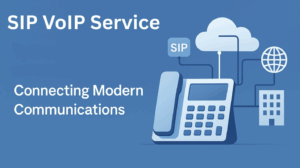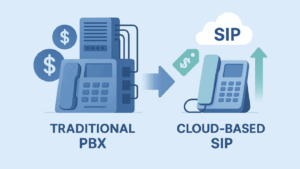
SIP Trunk Pricing Explained
 People turn to SIP trunking to reduce business communications costs, eliminate long-term carrier contracts, and make monthly costs more predictable. The first step to determining whether the move to SIP will have a positive ROI for your business is understanding all of your current communications costs. The next is determining the ongoing and upfront costs associated with SIP trunking. Unfortunately, some vendors make this part much more difficult than it needs to be. We believe in full transparency and no-nonsense pricing, so we are happy to lay out exactly what you can expect to invest in the SIP approach. Here are the most common costs and pricing issues to consider.
People turn to SIP trunking to reduce business communications costs, eliminate long-term carrier contracts, and make monthly costs more predictable. The first step to determining whether the move to SIP will have a positive ROI for your business is understanding all of your current communications costs. The next is determining the ongoing and upfront costs associated with SIP trunking. Unfortunately, some vendors make this part much more difficult than it needs to be. We believe in full transparency and no-nonsense pricing, so we are happy to lay out exactly what you can expect to invest in the SIP approach. Here are the most common costs and pricing issues to consider.
Monthly Fees Per Channel
While SIP trunks can be sold under a number of pricing models, by far the most common and most advantageous for business is what’s known as an unlimited SIP channel. A SIP channel represents one incoming or outgoing phone call (much like a traditional telephone line). You can find a SIP vendor that will let you purchase only exactly the number of SIP channels that you need and grow or reduce lines on demand. An unlimited channel eliminates local and long distance charges to a certain geographic footprint. (In our case, most of the US and Canada.)
Long Distance Charges
If your business involves making international calls or calling states that are not covered by the plan (Alaska and Hawaii for example), you’ll want to check the provider’s international rates, especially to the places you call the most. Pricing can vary widely from vendor to vendor, so be sure to get a feel for the market pricing for the places that matter to you. We make our international rates publically available on our pricing page.
Initial Setup and DID Fees
You should expect to pay a small setup fee and a monthly fee for each local, toll-free, and international Direct Inward Dial (DID) number that you need. As an example, we charge only $1.00 for setup and $1.00 monthly for local DIDs.
Number Porting
Many customers want to keep their existing phone numbers when they move from a traditional carrier to SIP trunking. This is something that your SIP vendor should be able to accomplish, but it does involve a lot of back and forth with the existing carrier, so there will be a fee for the service. How quickly this happens depends on both your new SIP provider and the current carrier.
Nomadic e911
Nomadic e911 is a very important service that enables users to set any address in the United States as the address to be transmitted to the nearest Public Safety Answering Point (PSAP) when a call is placed to 911. This is built-in with land line numbers, but it is something that needs to be set up for digital lines such as SIP. Nomadic e911 is absolutely necessary to ensure that emergency responders can get to the right place in short order. Most SIP vendors charge a fee for e911 on each number.
Taxes and Regulatory Fees
Telecommunications is a heavily regulated and taxed industry. In particular, the


